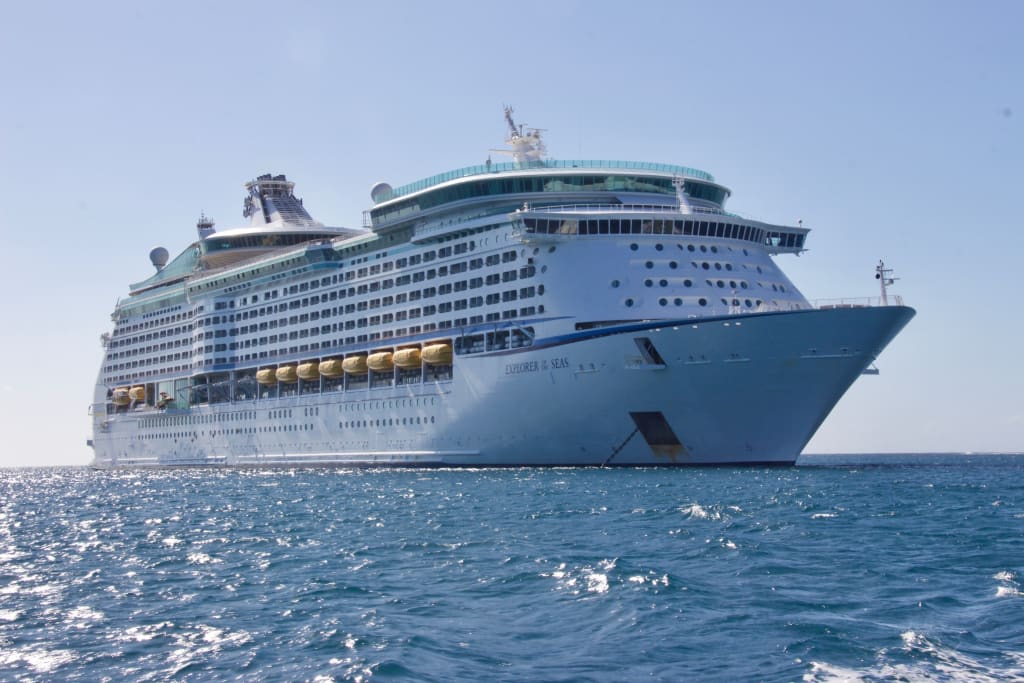Unveiling the Depths
The Untold Story of the Titanic

The sinking of the Titanic is one of the most infamous maritime disasters in history. However, amidst the well-known facts and narratives, there are some lesser-known aspects of this tragic event that have remained untold. Here, we delve into the untold story of the Titanic, shedding light on lesser-known details and events surrounding its fateful journey.
The Titanic, a luxurious passenger liner, embarked on its maiden voyage from Southampton, England, on April 10, 1912. The ship was hailed as "unsinkable" due to its advanced design and numerous safety features. However, fate had something else in store.
Contrary to popular belief, the Titanic was not the only ship in the vicinity of the iceberg-infested waters that night. The SS Californian, a British steamship, was situated just 19 miles away. However, due to a miscommunication, the Californian's radio operator had turned off the wireless system for the night. As a result, they were unaware of the Titanic's distress signals until it was too late. This untold aspect highlights a missed opportunity for potential rescue and adds to the tragedy of the event.
Another untold aspect revolves around the actions of the crew and passengers aboard the Titanic. While stories of heroism and sacrifice are well-documented, there were instances of misconduct and neglect as well. Investigations later revealed that the crew had not conducted sufficient lifeboat drills, causing confusion and delays during the evacuation process. Furthermore, some first-class passengers were accused of bribing crew members to secure their places on the lifeboats, while many steerage passengers were left without a fighting chance to survive.
Moreover, the sinking of the Titanic sparked a legal battle that often goes unnoticed. The White Star Line, the company that owned the Titanic, faced numerous lawsuits from the families of the victims. However, in a surprising turn of events, the company successfully invoked an obscure maritime law that limited their liability to the value of the ship's wreckage, a mere fraction of the total claims. This legal manoeuvre prevented many families from receiving adequate compensation for their loss, revealing a dark side of corporate responsibility.
The aftermath of the disaster also had far-reaching implications. The sinking of the Titanic led to significant advancements in maritime safety regulations. The International Convention for the Safety of Life at Sea (SOLAS) was established in 1914, imposing stricter rules on ship construction, safety equipment, and procedures for handling emergencies. The tragedy served as a wake-up call for the industry, ensuring that similar disasters would be prevented in the future.
In recent years, efforts have been made to explore and document the wreckage of the Titanic. In 1985, a joint American-French expedition discovered the remains of the ship, lying approximately 12,500 feet below the surface of the North Atlantic. Subsequent expeditions have provided valuable insights into the condition of the wreck and have helped preserve the memory of those who perished that fateful night.
The untold story of the Titanic encompasses not only the well-known tales of heroism and tragedy but also the overlooked aspects that complete the narrative. From missed opportunities for rescue to legal battles and regulatory reforms, these lesser-known details shed light on the complex and multifaceted nature of the disaster. As we remember the Titanic and its passengers, it is essential to acknowledge and understand the untold chapters of this historic event, ensuring that the lessons learned are not forgotten.
One untold aspect of the Titanic's story is the role played by wireless communications during the disaster. The Titanic was equipped with the latest wireless technology, allowing passengers and crew to send and receive messages while at sea. In fact, the ship's radio operators were hailed as heroes for their efforts to alert nearby vessels about the distress signals. However, what is often overlooked is the radio's potential to prevent the tragedy altogether.
Days before the Titanic set sail, there were numerous warnings of icebergs in the vicinity of its planned route. Other ships had been communicating these warnings through wireless transmissions, but for various reasons, the Titanic's captain, Edward Smith, did not receive or pay heed to all of them. This untold aspect highlights the crucial role that wireless communications could have played in averting the disaster if the warnings had been properly received and acted upon.
Furthermore, the aftermath of the Titanic's sinking saw a significant shift in international maritime regulations. The disaster prompted nations to collaborate and establish the International Ice Patrol, tasked with monitoring icebergs and issuing warnings to ships traversing the North Atlantic. Additionally, lifeboat regulations were revised to ensure that enough lifeboats were available for all passengers and crew on board. These untold developments underscore the lasting impact of the Titanic's sinking on global maritime safety.
Another untold story lies in the personal narratives of the passengers aboard the Titanic. Among the passengers were individuals from various walks of life, each with their own hopes, dreams, and aspirations. There were newlyweds embarking on their honeymoon, immigrants seeking a better life in America, and prominent figures from the worlds of industry, politics, and the arts. Their stories, often overshadowed by the magnitude of the disaster, add a human element to the tragedy.
For instance, the story of the Astors, one of the wealthiest couples aboard the ship, stands out. John Jacob Astor, a prominent businessman, and his young wife, Madeleine, were travelling back to America. Despite their wealth and influence, they were not immune to the fate that awaited the Titanic. John Astor lost his life, while Madeleine survived and later gave birth to their son. Their personal tale of love, loss, and resilience amidst the chaos encapsulates the untold stories of individual passengers aboard the ill-fated ship.
In recent years, technological advancements have allowed for the exploration of the Titanic's wreckage in more detail. Submersibles and remotely operated vehicles have been used to capture high-resolution images and video footage, providing a haunting glimpse into the preserved remains of the ship. These untold endeavours not only contribute to the ongoing research and understanding of the Titanic's final moments but also pay homage to the lives that were tragically lost.
The untold story of the Titanic is one that goes beyond the well-known facts and narratives. It encompasses missed opportunities, legal battles, regulatory reforms, personal tales, and ongoing explorations of the wreckage. By uncovering these lesser-known aspects, we gain a deeper understanding of the complexities surrounding this historic event. As the legacy of the Titanic endures, it reminds us of the profound impact that a single moment in time can have on individuals, society, and the course of history.
About the Creator
Mogomotsi Moremi
Author and entrepreneur
Telling stories, one word at a time. Bringing worlds to life through my books and articles. #WriterLife #NeverGiveUp #business
Enjoyed the story? Support the Creator.
Subscribe for free to receive all their stories in your feed. You could also pledge your support or give them a one-off tip, letting them know you appreciate their work.






Comments
There are no comments for this story
Be the first to respond and start the conversation.